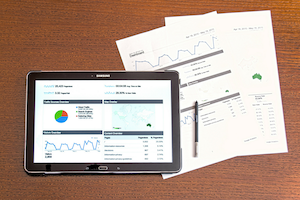How does your organization determine its pricing?
Not that long ago, most distributors left pricing in the hands of their sales managers or even just with the sales reps. They decided what to charge for all products and services, and we often paid them commission as a percentage of gross profit.
Today, with fierce competition from companies like Amazon and Grainger, distributors can no longer afford to take such a relaxed approach to pricing.
 Pricing needs to be approached strategically rather than just tactically. It needs to fit into a company’s overall value proposition – now more than ever – because the margin for error keeps getting narrower, and in many lines of trade that line is already razor thin. As such, pricing is often much too critical to leave to the discretion of the sales team.
Pricing needs to be approached strategically rather than just tactically. It needs to fit into a company’s overall value proposition – now more than ever – because the margin for error keeps getting narrower, and in many lines of trade that line is already razor thin. As such, pricing is often much too critical to leave to the discretion of the sales team.
Many distributors hesitate to adopt a more strategic approach to pricing because they either don’t understand the concept or are concerned about the reaction from their sales team. The good news is that strategic pricing isn’t smoke and mirrors.
Instead, strategic pricing is about leveraging data, identifying quality past pricing performance, and turning hindsight into foresight through predictive pricing analysis. Using a more data-driven approach to pricing and setting up margin or discount matrices in your ERP systems pricing library will reap huge rewards for your company.
This concept isn’t that different from what salespeople and sales managers do when it comes to large-volume negotiations with large customers. They take their time, research previous deals, understand the customer’s pain points, and then try to negotiate market-based pricing.
However, because salespeople can’t devote that same time and energy to smaller deals, distributors often find that less negotiation occurs and pricing is not optimized to the market potential. For instance, if a salesperson is quoting a small volume – say 20 cases at a 25% margin – while the price might be below market, if easily accepted by the customer, the sales rep will likely make little or no effort to improve the price.
We tend to price fast and loose on small volumes rather than taking the time to try and make an extra few dollars per case. Here is where leveraging data can have a big impact!
Strategic pricing isn’t about hitting home runs with your biggest and best customers. That’s where salespeople already spend the most time negotiating better quality pricing.
Instead, data analysis is more beneficial when used for pricing with the bottom third of your customer portfolio. That’s where the pricing tends to be sloppier.
Salespeople frequently quote where they are comfortable, but that anecdotal approach to pricing could have missed an opportunity for an additional 5 or 10 percentage points. In aggregate, you’re leaving a lot of money on the table!
There’s a safe way to find some of those lost profits. We’ve developed software which, through an analytical process using algorithms, creates a three-dimensional pricing model by looking at a distributor’s transaction history. It takes a snapshot of each transaction and then captures the difference between the cost and the sell price. From there, it looks at the type (segment) of customer and then stratifies them into different size tiers.
Your small customers shouldn’t be entitled to the same aggressive pricing offered to your largest customers. The third dimension for our model is the item sensitivity or price elasticity specific to that type of customer.
Learn more about how our strategic pricing process can improve your bottom line, be sure to give our team a call at (216) 360-4600 or email us at info@evergreenconsulting.com.
